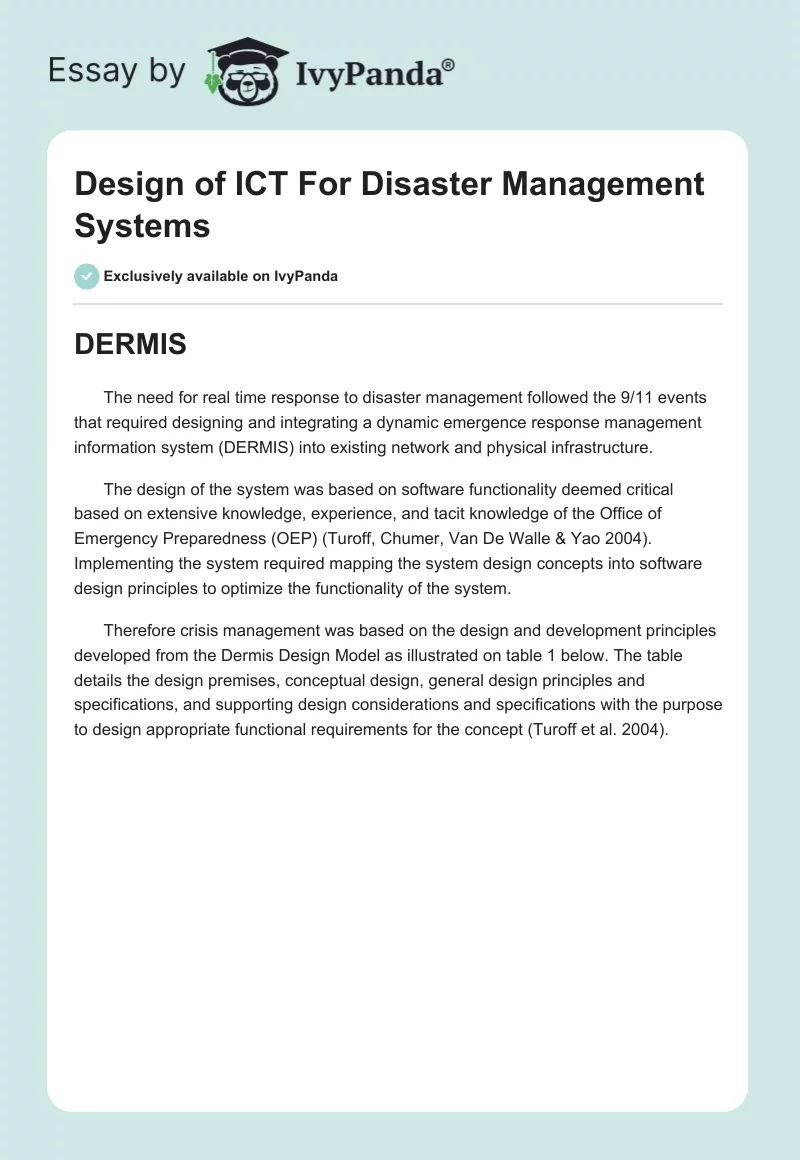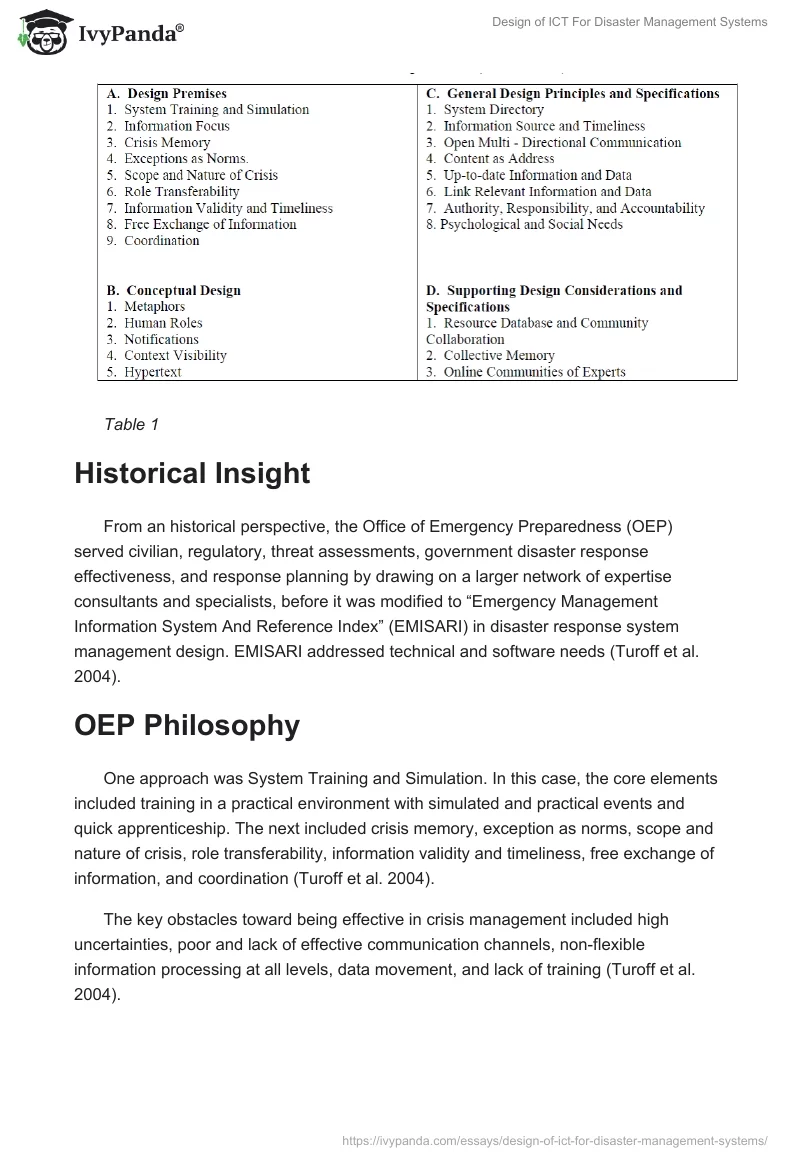DERMIS
The need for real time response to disaster management followed the 9/11 events that required designing and integrating a dynamic emergence response management information system (DERMIS) into existing network and physical infrastructure.
The design of the system was based on software functionality deemed critical based on extensive knowledge, experience, and tacit knowledge of the Office of Emergency Preparedness (OEP) (Turoff, Chumer, Van De Walle & Yao 2004). Implementing the system required mapping the system design concepts into software design principles to optimize the functionality of the system.
Therefore crisis management was based on the design and development principles developed from the Dermis Design Model as illustrated on table 1 below. The table details the design premises, conceptual design, general design principles and specifications, and supporting design considerations and specifications with the purpose to design appropriate functional requirements for the concept (Turoff et al. 2004).

Table 1
Historical Insight
From an historical perspective, the Office of Emergency Preparedness (OEP) served civilian, regulatory, threat assessments, government disaster response effectiveness, and response planning by drawing on a larger network of expertise consultants and specialists, before it was modified to “Emergency Management Information System And Reference Index” (EMISARI) in disaster response system management design. EMISARI addressed technical and software needs (Turoff et al. 2004).
OEP Philosophy
One approach was System Training and Simulation. In this case, the core elements included training in a practical environment with simulated and practical events and quick apprenticeship. The next included crisis memory, exception as norms, scope and nature of crisis, role transferability, information validity and timeliness, free exchange of information, and coordination (Turoff et al. 2004).
The key obstacles toward being effective in crisis management included high uncertainties, poor and lack of effective communication channels, non-flexible information processing at all levels, data movement, and lack of training (Turoff et al. 2004).
Conceptual Design
TheOffice of Emergency Preparedness (OEP) cuts across the nine emergency categories serving as a source of tacit knowledge to influence the software functionality of the emergency response system. The core concepts include metaphors which are the mental models for creating cognitive maps, the concept of human roles with actionable roles, notifications based on events, and context visibility for understanding users. That was in addition to hypertext concept for using different system functionalities (Turoff et al. 2004).
Generalized Design Principles
Toward achieving the design objective of the emergency system, the critical components to factor include system directory with its variants expressed in a hierarchical structure to aid members use the system effectively. That is in addition to information source and timeliness for capturing real time qualitative and quantitative data into a database (Turoff et al. 2004).
Open Multi-Directional Communication, content address, up-to-date information and data, Link Relevant Information and Data, Authority, Responsibility, and Accountability, and Psychological and sociological factors are additional factors (Turoff et al. 2004).
Supporting Design Considerations
The general requirements for designing the system include geographically, oriented resource database for the provision of real time information on emergencies. Others include collective memory for providing rules and description about events, Online Communities of Experts for collaboration with different experts and markets (Turoff et al. 2004).
Conclusion
The functionality of the system is critical in enabling the provision of real time information for responding to emergency situations.
References
Turoff, M, Chumer, M, Van De Walle, B & Yao, X 2004, ‘The Design of a Dynamic Emergency Response Management Information System (Dermis)’, JITTA, Journal of Information Technology Theory and Application, vol 5 no. 4, pp. 1-35. Web.


